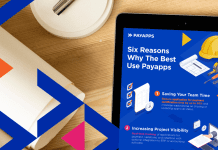As the Covid-19 pandemic continues to plague companies across the UK, Towergate Insurance explores the ways construction businesses can prepare for future risks
The current disruption to businesses and industries everywhere has resulted in tough decisions being made by companies desperately trying to stay afloat amid this battle with coronavirus. The construction industry is no different, witnessing its worst slump in more than two decades in April as so many builders across the UK were forced to shut down their sites.
Indeed, according to data from the Office of National Statistics (ONS), 82.2% of the workforce in the industry where businesses have had to temporarily close or pause trading, have been furloughed. Meanwhile, those businesses which have been able to continue to trade have furloughed 32.3% of their workforce.
This tumultuous situation and the fear that many working in construction could not be sufficiently safe from infection on busy sites, has seen 86% of firms report a drop in business activity since March, and just 3% reporting a boost in their business.
However, with the recent announcement from the prime minister that the plan for a slow, steady return to work for those who are able, is now in progress, it may be hoped that there is light at the end of the tunnel for those left out of work. When they do return, it will be as vital as ever to be prepared for any further disruptive threats to their businesses, whether that be coronavirus-related or not.
Towergate Insurance has pulled together six main businesses risks to know about and created a guide on how to future-proof for them, creating a free downloadable risk matrix template, covering everything from financial and operational risks to cybersecurity and physical risks.
Rundown of the risks
Financial Risk
Financial risk is a high priority for any business and therefore, is perhaps the first one that most people think about. It’s an overarching term for the kinds of risks that lie in your company’s finances. In construction, this can include anything from under-funded or underbid projects, the misappropriation of project funds or contractor default problems, and as businesses expand, these financial risks will grow in parallel.
Operational Risk
Not all risk comes from the outside. Operational risk is the type that arises from human error or misjudgment within an organisation. The good news, though, is that it is much easier to anticipate and develop safeguards against internal risks than external ones.
Of course, in construction, operational risk can also include difficult site and weather conditions among a range of other potential factors, but for many, managing operational risk also overlaps significantly with the management of reputational risk, particularly in industries where social media is a forum for public outreach. So, training employees in best-practice PR is important, but it is also crucial to have the right tools and apps to both monitor your online reputation and craft a digital presence that consumers find appealing.
Regulatory Risk
Regulatory risk is the threat that changes in laws and regulations will have a negative impact on your business, and in the construction environment, this can closely be linked to health and safety requirements and physical risk. Ignoring or missing such developments can increase the costs of your operations, reduce the attractiveness of an investment or change the competitive landscape.
In the worst cases, it can mean serious penalties and criminal proceedings. As such, it is vital to keep on top of new rules that will directly and indirectly affect your company.
Cyber Security
While construction sites have historically been targets for theft and petty crime, companies everywhere are now also being targeted by hackers, regardless of size, industry, and turnover. This is a booming area of risk and it should be of concern to any company which uses an Internet connection. Hackers are especially starting to focus on cloud-based systems and infrastructure, which are now being used by more and more organizations in the industry.
Employees need to be educated in safe use of the web, company data needs to be protected, and so does the personal information of customers. Developing countermeasures which satisfy security management standards is a good place to begin.
Reputational Risk
Often, it is only once lost that companies realise the true value of their reputation. Reputational risk describes the risk of damage to a firm’s reputation, and often involves ethics, safety, sustainability and security. Extreme cases may even lead to bankruptcy. It can be the result of many factors, including the actions of the company or its employees, or indirectly, through partners and suppliers.
Physical Risk
Risks to buildings, property and physical assets sit within the sphere of physical risk. Fire or explosions are the most common risks to a building, much of which can be overcome with suitable planning and emergency procedures. Industries like construction also need to consider the potential of injury and accidents on busy sites.
Every company—whether it’s a fledgling start-up, a growing SME, or a booming multinational—should be continually figuring out how to react and adjust to whatever curveballs the business world hurls in its direction, especially in this current climate. With the unknown future laid ahead, preparing for and being aware of all of these risks in good time can stand your business in the best position to thrive and overcome such challenges.
Towergate Insurance
Twitter: @towergate
LinkedIn: Towergate Insurance
















